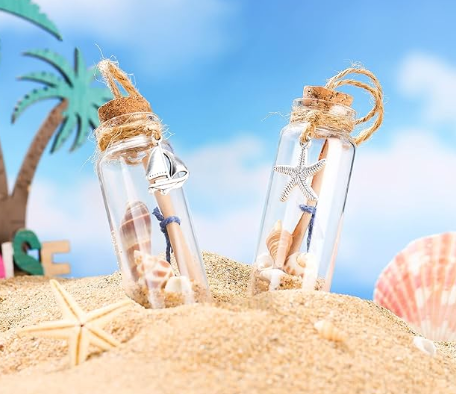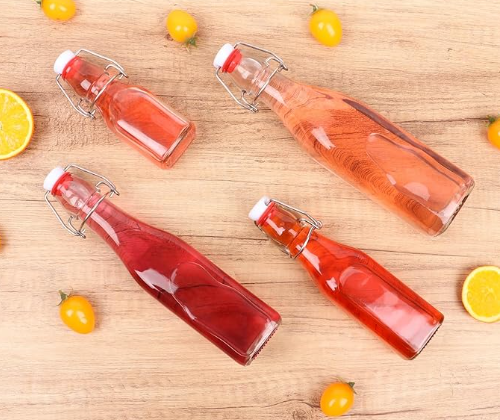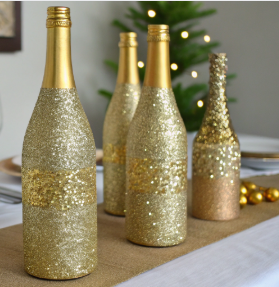The classic wine bottle silhouette is instantly recognizable worldwide, not only for its slender neck and elegant curves but also for a distinctive feature at its base: a deep indentation known as thepunt. This seemingly simple design element carries a rich history, practical benefits, and contributes significantly to the wine-drinking experience. Understanding why wine bottles have this indent reveals fascinating insights into glassmaking, wine preservation, and consumer perception.
At Paupacking, we are proud to offer a wide range of premiumWine Bottlesthat honor this traditional design while incorporating modern manufacturing excellence. Our bottles are crafted to meet the highest standards of durability, aesthetics, and functionality.
This comprehensive guide explores the multifaceted reasons behind the punt, tracing its evolution, practical uses, and symbolic meanings. Each section delves deeply into the topic, providing a thorough understanding suitable for wine producers, retailers, and enthusiasts alike.


1. Historical Origins: Why the Punt First Appeared
The punt’s origin dates back several centuries, rooted in the early days of glassblowing when bottle-making was a manual, artisanal craft. Glassblowers faced significant challenges in producing strong, stable bottles with the technology of the time.
-
Manufacturing Technique:Early glass bottles were mouth-blown, and the base was formed by pushing the molten glass inward with a tool called a pontil rod. This created a concave indentation, which eventually became known as the punt.
-
Structural Necessity:The punt helped to reinforce the bottle’s base, making it thicker and more resistant to breakage. This was crucial in an era when glass was more fragile and uneven.
-
Stacking and Storage:The indentation allowed bottles to be stacked more securely and prevented them from wobbling or tipping during transport and storage.
Over time, the punt transitioned from a manufacturing necessity to a hallmark of quality and tradition. Paupacking’sWine Bottlescontinue this heritage with carefully crafted punts that reflect centuries of glassmaking expertise.


2. Structural Strength and Pressure Resistance
One of the most important practical roles of the punt is to enhance the bottle’s structural integrity, especially for sparkling wines and champagnes.
-
Pressure Distribution:Sparkling wines are bottled under high pressure, sometimes exceeding 90 psi. The punt helps distribute this pressure evenly across the base, reducing stress points that could lead to breakage.
-
Thicker Glass at the Base:The inward curve created by the punt results in a thicker glass base, which is stronger and more resistant to impact.
-
Improved Stability:The punt creates a stable resting point, reducing the risk of bottles tipping over on shelves or during transport.
Paupacking designsWine Bottleswith precisely engineered punts that optimize strength and safety, particularly for high-pressure sparkling wine packaging.


3. Sediment Collection and Pouring Benefits
In traditional winemaking, especially with red wines and vintage ports, sediment naturally forms during aging. The punt plays a subtle but important role in managing this sediment.
-
Sediment Trap:The concave base creates a space where sediment can settle away from the neck, preventing it from being disturbed when pouring.
-
Cleaner Pour:When decanting, the punt helps keep sediment at the bottom, resulting in a clearer, more visually appealing wine.
-
Enhanced Aeration:The punt can aid in swirling wine in the glass, promoting oxygen exposure and releasing aromas.
Paupacking’sWine Bottlesare designed to facilitate these traditional wine service practices, supporting both aesthetic and functional excellence.


4. Pouring Ergonomics and Handling
The punt also influences how a wine bottle is held and poured, affecting the user experience.
-
Finger Placement:The indentation provides a natural resting place for the thumb, allowing for a more secure grip and controlled pour.
-
Weight Distribution:The punt contributes to the bottle’s balance, making it easier to handle despite its weight.
-
Elegant Presentation:Sommeliers often hold bottles by the punt during formal service, adding grace and professionalism to the pouring ritual.
Paupacking’sWine Bottlesfeature ergonomically designed punts that enhance usability for both professional and casual wine drinkers.

5. Aesthetic Appeal and Perceived Quality
The punt has become a symbol of wine quality and tradition, influencing consumer perception.
-
Visual Depth:The indentation adds depth and dimension to the bottle’s silhouette, enhancing its visual appeal.
-
Symbol of Craftsmanship:Consumers often associate punted bottles with artisanal production and premium quality.
-
Marketing Tool:The punt can be used to differentiate products and convey exclusivity.
Paupacking’s elegantWine Bottlesincorporate classic punt designs that reinforce brand prestige and consumer trust.


6. Facilitating Label Application and Bottle Storage
The punt affects practical aspects such as labeling and storage.
-
Label Placement:The punt allows for a consistent flat surface above it for applying labels neatly.
-
Storage Efficiency:Bottles with punts can be stored more securely on racks or in cases, reducing movement and breakage.
-
Stacking:The punt helps interlock bottles when stacked horizontally, improving transport safety.
Paupacking ensures ourWine Bottlesare optimized for labeling and storage efficiency, supporting supply chain needs.


7. Variations in Punt Depth and Style
Not all wine bottles have the same punt depth or shape; these variations can indicate different wine styles or regional traditions.
-
Deep Punts:Common in Champagne and sparkling wines for pressure resistance.
-
Shallow Punts:Often found in table wines or bottles designed for easy handling.
-
No Punt:Some modern or alternative packaging opts for flat bases.
Understanding these variations helps producers select the right bottle for their product. Paupacking offers a wide range ofWine Bottleswith customizable punt depths to suit diverse needs.


8. The Punt’s Role in Wine Aging
The punt can influence how wine ages in the bottle.
-
Sediment Management:As previously noted, punts help sediment settle away from the neck.
-
Temperature Stability:The shape can affect how the bottle rests in cellars, potentially influencing temperature exposure.
-
Air Exposure:Combined with cork and bottle design, the punt contributes to the micro-oxygenation process during aging.
Paupacking’sWine Bottlesare crafted to support optimal aging conditions for premium wines.


9. Modern Innovations and Punt Design
While the punt is traditional, modern glass manufacturing allows for innovation.
-
Lightweight Punts:Designed to reduce glass usage and bottle weight without sacrificing strength.
-
Decorative Punts:Embossed logos or patterns within the punt for branding.
-
Functional Designs:Punts engineered for automated filling and capping lines.
Paupacking embraces these innovations, offeringWine Bottlesthat combine tradition with modern efficiency.
10. Punt and Consumer Perception: Myths and Realities
There are many myths around the punt’s significance, such as deeper punts indicating higher quality or older wine. While these are not always true, the punt remains a powerful visual cue.
-
Marketing Influence:Some brands use exaggerated punts to imply luxury.
-
Consumer Expectations:The punt adds to the ritual and experience of wine consumption.
-
Practical Benefits:Regardless of myths, punts provide real functional advantages.
Paupacking’sWine Bottlesbalance authentic tradition with practical design, ensuring your wine packaging meets both consumer expectations and functional needs.
Summary Table: Why Wine Bottles Have an Indent in the Base
| Reason | Description | Paupacking Feature |
|---|---|---|
| Historical Origin | Strengthened early glass bottles | Classic punt designs honoring tradition |
| Structural Strength | Enhances pressure resistance and stability | Precision-engineered punts for durability |
| Sediment Collection | Traps sediment for clearer pours | Designs optimized for aged wines |
| Pouring Ergonomics | Provides grip for controlled pouring | Ergonomic punt shapes for ease of use |
| Aesthetic Appeal | Adds elegance and premium perception | Elegant bottle shapes with refined punts |
| Labeling and Storage | Facilitates label placement and bottle stacking | Consistent base design for supply chain |
| Punt Variations | Different depths for wine types and styles | Customizable punt depths and shapes |
| Wine Aging | Supports sediment management and aging conditions | Bottles crafted for optimal maturation |
| Modern Innovations | Lightweight and decorative punts | Innovative designs balancing tradition and efficiency |
| Brand Differentiation | Enhances brand identity and market appeal | Custom glass solutions for unique branding |
Conclusion
The punt in a wine bottle is a feature rich in history, functionality, and symbolism. It strengthens the bottle, aids in sediment management, improves pouring, and elevates the bottle’s aesthetic and perceived quality. Paupacking’s premiumWine Bottlesembody these qualities, combining traditional craftsmanship with modern innovation to meet the needs of today’s wine producers and consumers.
Choosing Paupacking means selecting glass bottles that honor the heritage of winemaking while supporting durability, usability, and brand distinction. Explore our collection today and discover how our expertly designed wine bottles with classic punts can enhance your product’s presentation and performance.
For customized solutions or bulk orders, contact Paupacking to partner with a trusted leader in glass bottle manufacturing and packaging excellence.










